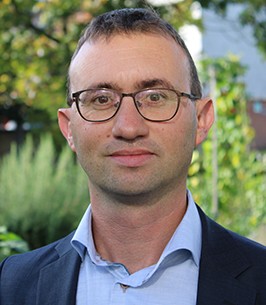Speaker

Session I
Prof. Sven Mangelinckx
Department of Green Chemistry and Technology, Ghent University, Belgium
[Session 1-5] Exploration of Algae for Identification of Biomolecules as Potential Biopesticides and Biostimulants
Abstract
Increasing concern about environmental and health issues, population growth and increasing demand for quality food, depletion of non-renewable resources, and the need for replacing conventional agrochemicals are strong drivers for the development of biostimulants and biopesticides from marine resources.
As an important group of microalgae, diatoms account for about one-fifth of the photosynthesis on earth and form the basis of many aquatic ecosystems. Intertidal marine biofilms are dominated by diatoms and bacteria, with the diatoms in close association with Proteobacteria, a phylum known to employ N-acyl homoserine lactone (AHL) mediated Quorum Sensing (QS). In this presentation, it will be shown that QS molecules may play a significant role in diatom growth in the global oceans. A screening revealed that the observed stimulation or inhibition of diatom growth was linked to the length and functionality of the acyl side chain of these AHLs.
Furthermore, the model diatom species Seminavis robusta uses multiple sexual cues during mating, including cyclo(L-Pro-L-Pro) or diproline as an attraction pheromone. Our interesting finding that this diatom pheromone also acts as an induced resistance-establishing compound in rice against root-knot nematodes will be discussed. This discovery is highly desirable in times when many pesticides are getting banned while the efficiency of food production must increase.
Introduction of affiliation/ Relation to the Marine Global Project
My team with the SynBioC research group is active in two research areas. Chemical tools, such as azaheterocycles, amino acid derivatives, peptides, fatty acids and other natural products, are developed via new synthetic strategies, used for biological study and developed to applications in sustainable agriculture, aquaculture and life sciences. Moreover, chemical techniques, like extraction, bioassay-guided fractionation and analytical characterisation are used to discover, isolate and identify bioactive compounds from natural resources, such as bacteria, algae, plants, and waste streams, hence promoting circular economy. In the framework of bioeconomy, one aim is to identify and valorize new biostimulants and biopesticide molecules from algae.














